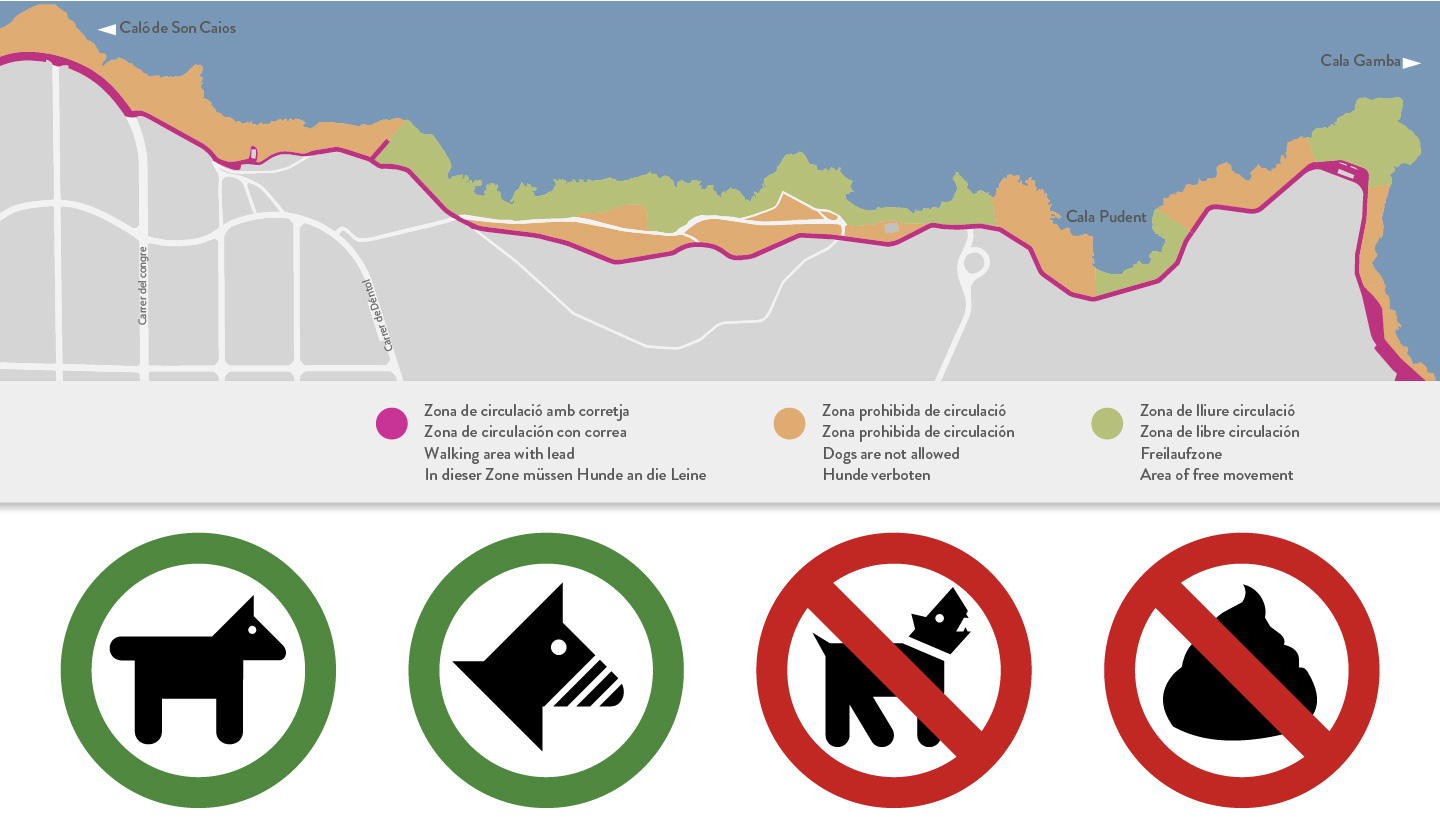
History and heritageBetween 1988 and 1993, Palma City Council acquired the two plots that comprise the es Carnatge public space
The coastal area between Cala Pudent and the anti-aircraft batteries of Can Pastilla and the islet of sa Galera was declared a natural area of special interest (ANEI). In addition, Palma’s land-use plan classifies this area as a public free-space (ELP) and as a centre of cultural interest (CIC) owing to its paleontological value. 5
The name es Carnatge refers to the activity of eliminating and making use of dead livestock that took place in the houses in this location between the last decade of the nineteenth century and 1959. Nowadays, es Carnatge has small sandy coves and rocky access to the sea as well as a coast path with access for cyclists and walkers.2
Cala Pudent has an area of flat land in its most inland part where various sandstone quarries are found. These were in operation during the twentieth century once the ones at Coll d’en Rabassa were exhausted. This area is also used by the army as an area for manoeuvres with mobile artillery. Continuing along this plain, we come to a small hillock where an anti-aircraft battery was built, comprising four circular emplacements excavated for the cannons, rangefinder, goniometer and command post. They were linked by a subterranean gallery with storage spaces.
Archaeological remains from human activity have been found around these locations dating to the period when Mallorca was Muslim controlled, the ninth and twelfth centuries AD. Ceramic findings such as the remains of a water wheel and a decorated jug indicate the presence of an agricultural holding. In the early 1960s, numerous fragments of Punic ceramic and a copper hook were found. A small pre-Roman burial cave was also found, of which the circular trace of the base currently remains.3 See location
 Mill. subsp. Origanifolium).jpg)
.jpg)
